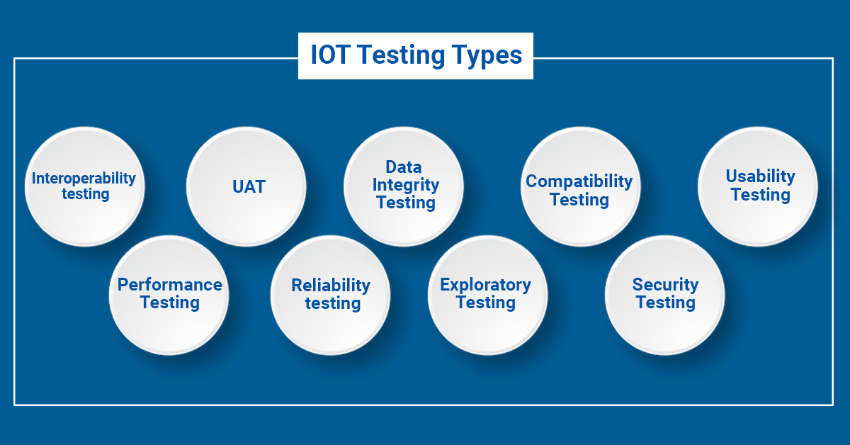Show:
IoT Testing vs. Traditional Testing: Types, Approaches and Key Differences
The internet of things (IoT) has become a buzzword in recent years. The rise in the number of devices connected online in recent times and the increased use of IoT is what has caused this. These devices gather data from all corners of our environment, including homes, offices, and even cars. As a concept, the Internet of Things is a network of physical objects connected to the internet. This network provides data about these objects and allows them to be remotely monitored and controlled. These days, almost everything has wireless connectivity, which allows for monitoring a multitude of different variables using just one device.

Since IoT is a large, complicated network where devices communicate remotely in real-time, any security or performance issues arising at any of it can adversely affect the functionality of the rest of the system. As such, IoT testing is done using IoT testing tools, such as device simulators, to detect any issue that might affect the functionality of the network. Here, we explore IoT testing and its types, how to approach testing IoT devices, and the key differences between IoT and Common Business Software Testing.
IoT Testing and Its Types
Internet of things testing services are needed when testing all the different electronics that are part of this interconnected web; from looking at how well it communicates with other devices on the network to examining its ability to withstand harsh conditions (such as extreme temperatures), these items need to be constantly checked and rechecked against robust standards for them to work properly and efficiently over time.

Source: Zymr
IoT devices are still quite new, so there aren’t too many standards for how to test them yet. However, here are a few common types of IoT testing:
Usability Testing
Usability testing is all about examining how easily and effectively an IoT device can be used by different end users. This can also be done using various user-centered methods such as usability tests.
Security Testing
Security testing involves examining how well a device or system can protect itself from threats, whether from internal or external sources.
Performance Testing
Performance testing involves examining how fast a device or system is when it performs its functions. It helps determine whether it meets the performance expectations and can deliver the expected service rate under different conditions (especially if it is operating on battery).
Reliability and Scalability Testing
Reliability and scalability testing is all about ensuring that the device or system will work as expected when used by different users or under unforeseen circumstances. For example, when one device fails, the rest of the system should continue to work as expected.
Compatibility Testing
Compatibility testing is all about ensuring the devices are compatible with each other in terms of hardware and software. That is, ensuring that the device can communicate with other devices on the network and vice versa.
Data Integrity Testing
Data integrity testing is all about looking at whether the data being received by the IoT device is accurate and within predetermined limits. For example, a temperature sensor should only be able to receive data points within a temperature range.
How should I Approach Testing IoT Devices?
As IoT devices are different from each other, there is no one-size-fits-all approach to testing them. Given the nature of IoT devices and the level of connectivity involved, it’s clear that they will come with some unique challenges, so how you approach testing these devices will be situation specific. While these challenges will vary from device to device, there are a few tips that may help deal with those issues:

Understanding the Automation Testing
All IoT devices are likely to be used in some kind of automation (whether in mission-critical systems or as part of a customer care system). As such, automating testing will help incorporate a number of testing scenarios along with realistic scenarios, making it easier to test the device. This can be done by either scripting the tests or using tools that automate some test steps.
Checking Access to Cloud Data
Since IoT devices are connected to the internet, which is composed of various links and networks, it’s important to ensure you can access all the cloud data from the device. This means checking if the testing can be done in conjunction with other IoT services or any other web-based services.
IoT vs. Common Business Software Testing: Key Differences
When it comes to traditional testing, such as applications and programs, the approach tends to be that one type of test will cover all other types. For example, the unit tests are written for functionality testing, and the integration tests for integration testing. With IoT devices, however, things don’t always work this way. For example, specialized IoT device test equipment are required for IoT testing. As such, there are some key differences between IoT device test and more traditional software testing; here, we look at some of them.
Device Interaction Module
The key difference with conventional software that is used in IoT testing is the device interact module or the interface like that of the user. Since there are so many different types of devices and interfaces for each different device type, there has to be a module that interacts with all devices, allowing code to be written to test specific individual devices.
UI
With IoT devices, you cannot use the same UI testing approach that your other software may have. In fact, with IoT devices, you often need to use different UIs (such as web pages or mobile apps) for testing. This is because of the different ways in which the IoT device is used.
Real-Time Data Testing
Like IoT devices are not just one kind of device, the way software testing works is also not restricted to one particular test method. However, in software testing, unit tests and integration tests work together to ensure that the code is behaving correctly.
Overall, IoT has certainly taken the globe by storm. Nowadays, we are surrounded by IoT devices, which have made life easier. However, its interconnectedness is rather complicated as all devices have to function appropriately in real-time. As such, IoT engineers must conduct tests to ensure that everything in the network runs smoothly. The functionality, performance, and security of IoT are tested using IoT testing and not traditional software testing due to the integration of hardware and software, different UIs, among other factors.
There are several types of IoT testing that include usability, compatibility, performance, reliability, and scalability, among others. While conducting these tests, it is important to consider various issues, such as access to cloud data and automation testing. Taking time to understand IoT, its architecture, operation, and infrastructure is essential in conducting successful tests.

 Return to Previous Page
Return to Previous Page








